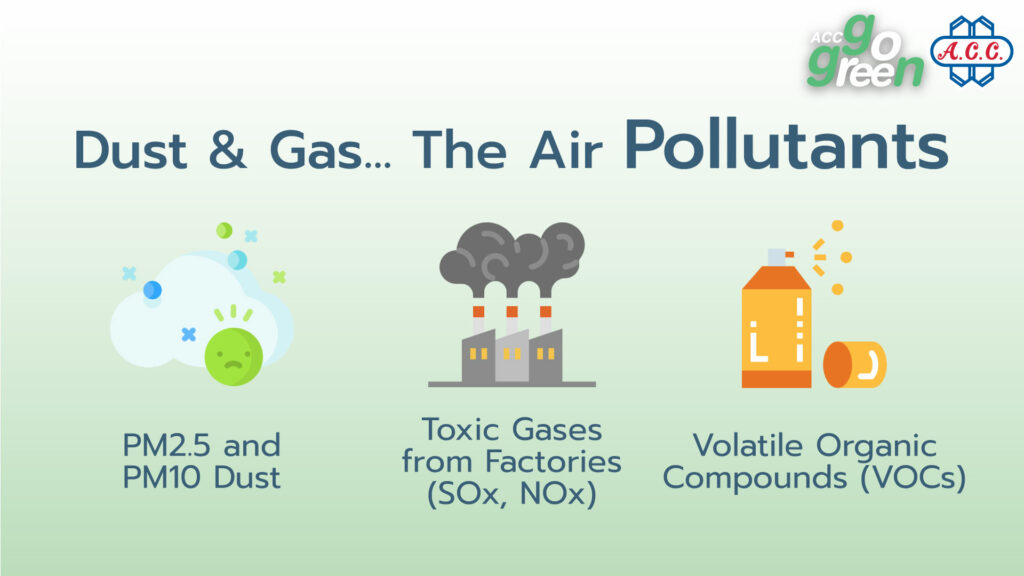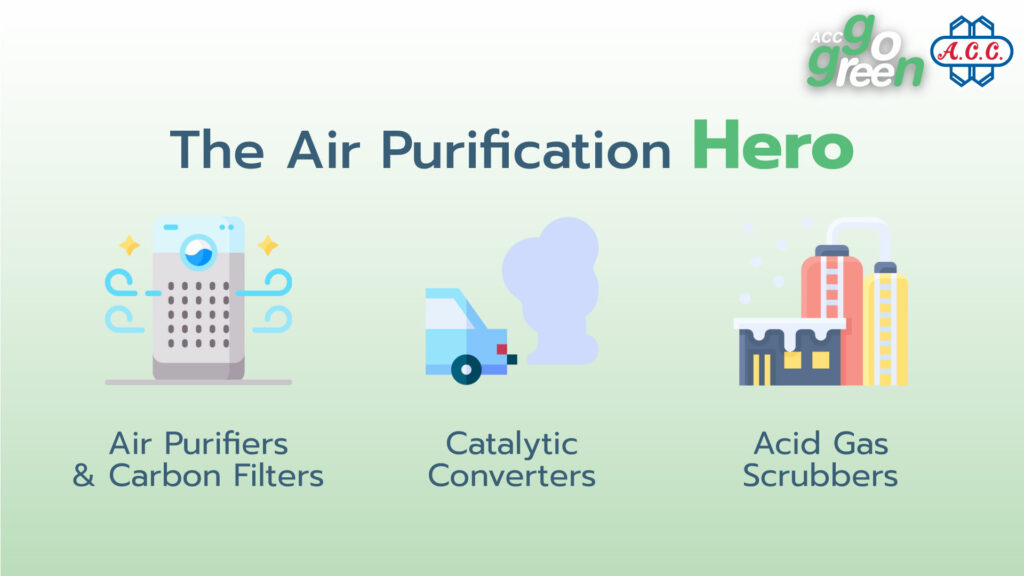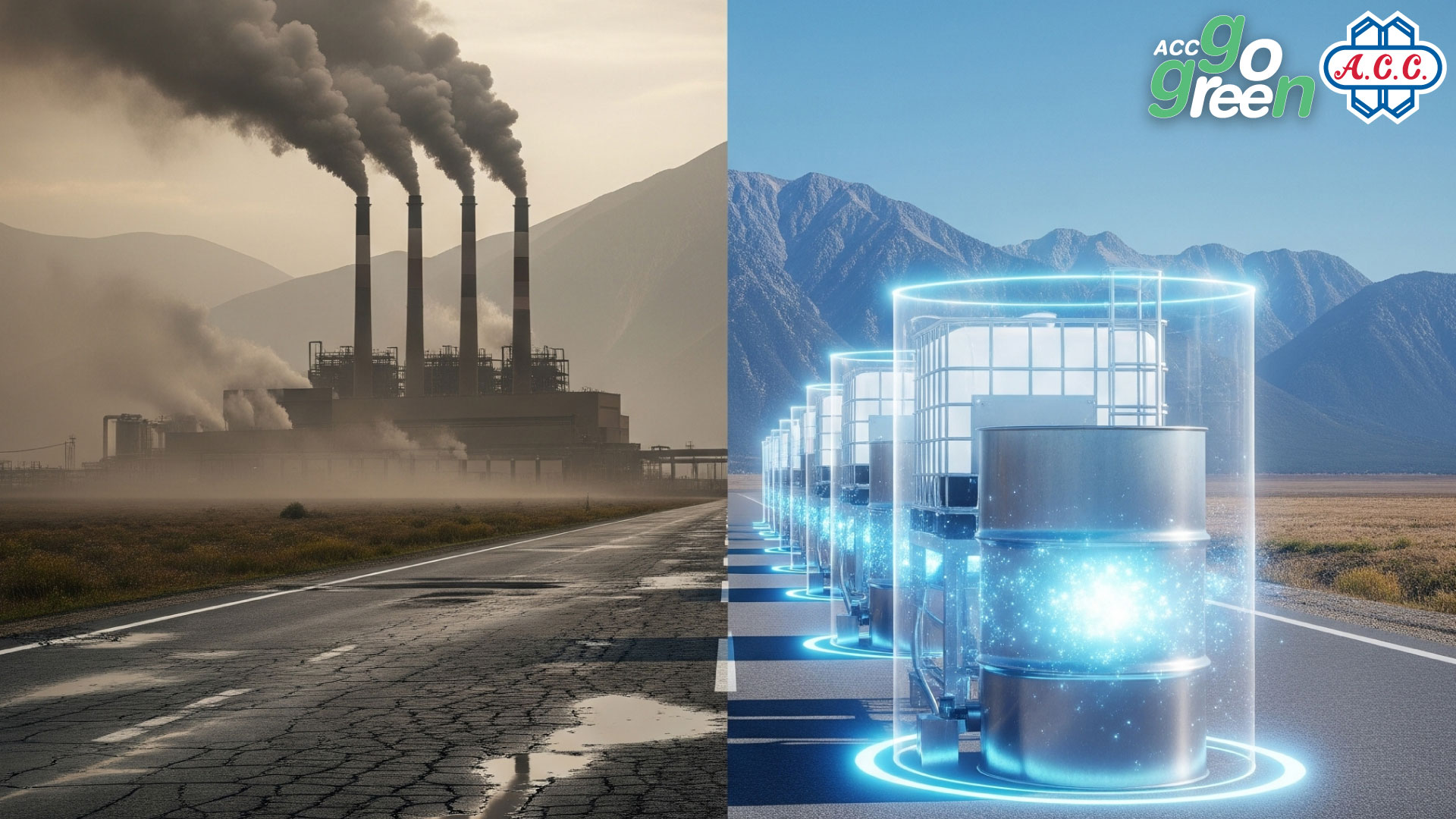What’s the first thing you think of every time you take a breath? Maybe it’s the fresh air after a morning rain, the fragrant scent of flowers in a garden, or the cool breeze coming through a window. But from another perspective, the truth is that the air we breathe every day isn’t always as clean and pure as we think. Air pollution, especially in large cities, is a silent threat that jeopardizes human health and impacts the environment worldwide.
When you hear the word “chemicals,” many people first think of a negative image—toxic smoke from industrial plants, piles of hazardous waste dumped irresponsibly, or even a pungent smell that makes us want to get away. But in truth, chemicals don’t just have a negative role. If you look a bit deeper, you’ll find that chemicals also have an “amazing other side,” acting as a hero that helps treat and purify the air so we can breathe more easily.
This article invites you to open up a new perspective and explore the secrets of chemicals that many people may have never considered. We’ll see how they play a crucial part in innovations and technologies for clean air, and finally, what small part we, as consumers, can play to help keep this world a livable home for everyone.
Getting to Know the Air We Breathe More Deeply
Before we get to the chemicals, let’s first try to understand what “air pollution” we face every day actually consists of. In reality, clean air should primarily be composed of nitrogen and oxygen. But when foreign substances are mixed in at excessive levels, it becomes pollution. These pollutants include several types, such as:
∘ Fine Dust Particles (PM2.5 and PM10)
This harmful dust comes from incomplete combustion, such as smoke from car exhaust pipes or open burning. Its particles are so small they can penetrate deep into the respiratory system and sometimes even leak into the bloodstream.
∘ Toxic Gases from Industrial Factories
Such as sulfur oxides (SOx) and nitrogen oxides (NOx), which not only harm the lungs but are also the main culprits that cause acid rain.
∘ Volatile Organic Compounds (VOCs)
These are chemicals that easily vaporize at room temperature. We might find them closer than we think, in things like house paint, cleaning agents, or even glue. If they accumulate too much in the air, they are harmful to health and are also a precursor to the formation of ground-level ozone.

Air Pollution
Chemicals Aren’t Just Negative, How They Help Treat the Air
If we say that chemicals are one of the sources of pollution, many people would nod in agreement. But in reality, chemicals are also used to solve this problem. Here are some interesting examples of how they act as a “hero.”
∘ Air Purifiers and Activated Carbon Filters
This is the most familiar example. Activated carbon is a substance with a massive number of pores, giving it a huge surface area to absorb VOCs, unpleasant odors, and various toxic gases. The majority of air purifiers we use at home have this type of filter as their core component.
∘ Catalytic Converters in Cars
The catalyst in a car’s exhaust pipe is a prime example of chemicals working marvelously. It uses precious metals like platinum or rhodium to accelerate the conversion of toxic gases from the engine, such as carbon monoxide (CO), nitrogen oxides (NOx), and hydrocarbons (HC), into harmless gases like carbon dioxide (CO₂), nitrogen (N₂), and water (H₂O).
∘ Acid Gas Scrubbers
Factories that release SOx or NOx install Scrubber systems that use alkaline substances, such as calcium hydroxide or sodium carbonate, to react with these acidic gases. This “fixes” them and transforms them into a harmless form before they are released into the atmosphere.

Air Tech Solution
Creating Clean Air at the Industrial Level
The management of air pollution isn’t just the responsibility of the government; the industrial sector must take responsibility as well. The installation of treatment systems in manufacturing plants is a crucial step that helps reduce impacts on the environment and surrounding communities. Widespread examples include:
∘ Flue Gas Desulfurization (FGD)
This system uses chemicals to react with the SOx released from factory smokestacks to remove it. This helps prevent the formation of acid rain and reduces the impact on the human respiratory system.
∘ Selective Catalytic Reduction (SCR)
This system uses certain chemicals as catalysts to convert NOx gas into nitrogen and water, which is a highly effective method for controlling air pollution, especially in large-scale industrial factories.
Cleaner Air… for Better Health
These air treatment innovations might seem complex, but they are actually a mechanism working behind the scenes to improve our quality of life. Knowing how chemicals function to eliminate pollution helps us see the connection between these technologies and our own health.
The impact of air pollution on health doesn’t just stop at minor coughing or irritation. It also poses a risk for serious long-term problems, such as:
∘ The Respiratory System
The extremely small PM2.5 particles can penetrate deep into the lung’s alveoli, causing inflammation and increasing the risk of asthma, pneumonia, or even lung cancer.
∘ The Cardiovascular System
Toxins that enter the bloodstream can cause inflammation in blood vessels and increase the risk of heart disease and stroke.
∘ Overall Health
Continuous exposure to pollution for a long period weakens the immune system, making it easier to get sick, and also negatively affects the development of young children.
Therefore, investing in air treatment technology, both at the household and industrial levels, isn’t just about the environment; it’s an investment in the health of every single one of us. Clean air is not just a desirable thing; it’s a fundamental right that everyone should have.
Conclusion
Chemicals have both a harmful and a beneficial side, like two sides of the same coin. Understanding and using them correctly can transform chemicals into a powerful tool for solving environmental problems.
Air pollution is not a distant issue, but when we learn about the innovations and technologies that help treat it, we begin to see hope and our own small role in creating change. Supporting innovations and choosing environmentally conscious products is one way we can help make our world a better place.
Because clean air does not happen automatically; it’s the result of the cooperation and actions of all parties to ensure that we and future generations can breathe deeply in truly clean air.



